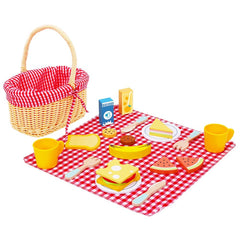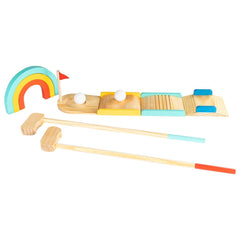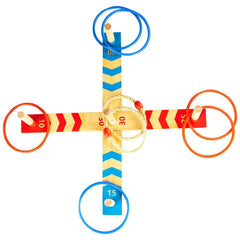“The World Health Organisation (WHO) recommends no screen time for babies under 2 and no more than one hour of screen time a day for those aged 2 to 4.”
Parents naturally worry about how much screen time their children have on average. In a world where screens now dominate, from cellphones to tablets and even electronic toys, you are absolutely not alone if you have ever pondered how to inspire more screen-free play. The positive news is that it is quite feasible to design a screen-free play routine your child actually likes and looks forward to, with a little preparation and a few quick ideas.
Whether your child is an inquisitive crawler, an active toddler, or a busy preschooler, we will provide you useful ideas to make screen-free time enjoyable, stress-free, and a regular feature of your family life.
Why Go Screen-Free?
Children's sleep, mood, attention span, and physical activity levels may all suffer due to exposure to screens early. Various studies and organisations, like UNICEF, have noted the hazards of early exposure to screens for children.
Children's brains are developing quicker than ever in the first five years; thus, they require lots of real-world exposure and hands-on play to acquire critical abilities such as social interaction, creativity, and problem-solving.
Developing a screen-free play schedule goes beyond simply reducing screen usage. It's about giving your child a universe of chances for learning, discovery, and development.
Let’s uncover how to plan a screen-free schedule for your child to play.
Start small and maintain realism
If your child is accustomed to screens playing a daily role, don't worry; you don't have to stop abruptly. Start by budgeting little blocks of screen-free time. You might decide, for instance, on 30 minutes in the morning and another half-hour in the afternoon.
Replacement with intriguing activities
Provide interesting, hands-on projects that grab their interest at these times. Imagine building trains, stacking blocks, experimenting with shape sorters, or role-playing with wooden meal sets. Children up to five years of age love straightforward, open-ended toys that allow them to run the narrative.
Designing Inviting Play Areas
Though naturally curious, a crowded area or too many toys could cause children to get bored or frustrated. Too many toys lead to overstimulation. Rather, consider arranging a basic, neat play environment that promotes discovery and exploration.
-
Show a few preferred items at their level using low shelves or baskets.
-
Turn toys often to keep them feeling fresh and new.
-
Add comfortable nooks, perhaps a tent for quiet time or a reading place with plush couches.
-
Natural materials, like wooden toys, can be more peaceful than plastic, flashing lights, or loud sounds.
You only need a spot that is theirs, where they are free to play the way they like. You do not need a large area for that.
Schedule daily activities, including screen-free play
Children thrive on routine; hence, when screen-free play fits your family rhythm, it becomes something they expect and even look forward to. Think about morning play either before or after dressing. It could be a messy play session or a mid-morning outdoor trip.
Children who live in predictable environments feel comfortable, relaxed, and involved. Some researchers argue that allowing children to experience boredom does not imply monotony. The routine creates the space for creativity and exploration. While you can keep changing the exercises, consistent time really makes a difference.
Promote Independent Play
One of the best things about screen-free play is teaching your child how to enjoy themselves. While screens foster dependency on a device for company and entertainment, open play sessions nurture independent play. Such activity increases confidence, the ability to solve problems, and imagination.
Lead by Example
Our children are constantly observing us. Even if we sometimes feel they are not, rest assured they do notice all the time. So, be a participant while your child is away from the screen, as they will follow you. Therefore, remember to put your electronics away during screen-free playtime. Remember, it’s for both of you.
Final thoughts
Establishing a screen-free play schedule need not be a job or a fight. You can fit playtime into your family's daily rhythm in a way that seems natural and enjoyable with some forethought and patience. Furthermore, the best aspect is that you are allowing your child the time to develop, learn, and dream. There's no need for screens!
We hope that the guide above gave you useful insights and will help you find the next best toy for your kids that stimulates screen-free playtime. Explore our entire collection of toys at Barnshenn for newborns and toddlers. Are you in search of additional inspiration? Hop on to our social media handles, like TikTok, Pinterest, and Instagram, for more gift inspiration for toddlers. See you in the next blog.
FAQs:
-
How much screen time should young children have?
-
Experts advise toddlers under two to avoid screen time, and children aged two to five should limit their daily high-quality screen time to one hour.
-
What if my youngster grows bored without screens?
-
Allowing children to experience boredom is beneficial. It often results in innovation and problem-solving.
-
For screen-free time, what are some ideal toys for kids?
-
Perfect for screen-free time are toys that support open-ended play. Think wooden blocks, shape sorters, stacking toys, pretend play sets, puzzles, and musical instruments. These kinds of toys let kids explore at their pace and use their imagination while playing.





